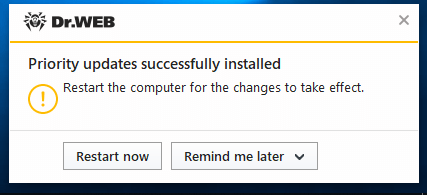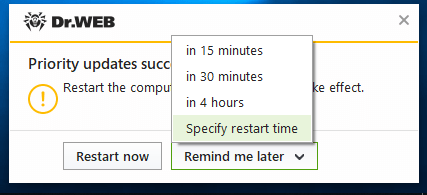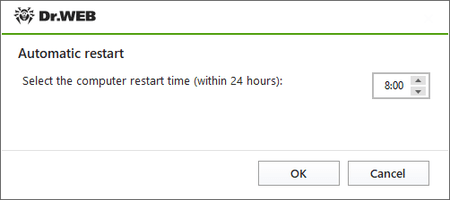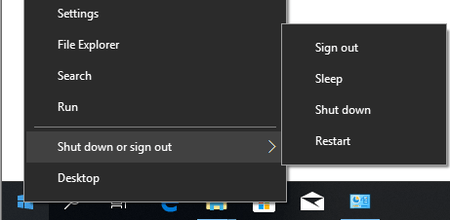Domande frequenti per argomento
Aggiornamento dell'antivirus e dei database dei virus
How much does an expanding virus database impede the anti-virus’s search for malicious objects?
Virus databases do indeed get larger with each update. But Dr.Web solutions use the most cutting-edge anti-virus database format so that as the virus databases get bigger, scan speed is not reduced.
Moreover, because the latest technologies are applied to Dr.Web solutions, the size of the virus databases can be reduced. This is because they exclude entries containing information about malicious programs that are automatically detected with the help of the newest technologies.
How often do Dr.Web anti-virus programs require a reboot?
Doctor Web strives to release Dr.Web component updates, especially critical ones, as quickly as possible. After all, the reliability of the protection directly depends on the anti-virus’s ability to intercept and cure the latest threats and still operate error free. Experience shows that for each individual product, updates that require a reboot are being released no more than once or twice a month, the only exception to this being recently released program versions and those under active development.
I can’t update Dr.Web; I’m getting an update error message. What should I do?
First do the following:
- Make sure that your computer is connected to the Internet.
- If you are using a firewall, go into its settings and allow the drwupsrv.exe update module, located in the folder containing the installed Dr.Web software, to access the Internet.
- If you access the Internet through a proxy server that requires authentication with a username and password, go to the settings and specify the proxy server’s address and port, and the username and password for it. To do this, right-click on the Dr.Web icon in the notification area, and select Tools –> Settings. In the next window, go to the Proxy server tab and configure the proxy server settings.
If after trying the above, you are still experiencing difficulties, please contact the Doctor Web technical support service and describe in detail how your computer connects to the Internet (note: if a proxy server is involved, please specify whether authentication is required, and whether your browser or Dr.Web update module is configured to be used via the proxy server).
Is there some utility that can update the anti-virus automatically, and how can I set this up?
When an Internet connection is present, the anti-virus updates every 30 minutes by default (this is the most optimal setting).
When required, you can change this setting by doing the following: right-click on the Dr.Web icon located in the bottom-right corner of the system tray. Then, in the context menu, select Tools → Settings and go to the Updating tab.
Alternatively, you can update the anti-virus manually by right-clicking on the Dr.Web icon in the bottom-right corner of the system tray, and then selecting Updating in the context menu.
I’ve heard that when I buy the Dr.Web anti-virus, I’m only paying for a copy of the software program, and that I will have to pay over and over again for anti-virus database and module updates. Is that true?
No, that’s not true. When you buy the anti-virus, you are paying not only for the program itself, but also for the right to get anti-virus database and module updates as well as the opportunity to contact the technical support service while your license is valid. Nobody will ever come after you for additional money! Proof of this can be found in the Dr.Web license agreement which you are invited to read before you install the anti-virus. Doctor Web assumes a number of obligations and guarantees the following:
‘Throughout the entire software usage period, the User is granted the right to receive through the Internet virus database updates as well as upgrades of the software modules as they are made available by the Rights Holder’.
The Dr.Web license agreement is a legal document that guarantees your rights as a consumer.
What should I do if an anti-virus update requires a reboot but I can’t do it right now?
In the window that notifies users that a reboot is required, you can choose when you want the system rebooted. You can choose to do it now or postpone it until a time convenient for you.

What’s the difference between updating the anti-virus components and updating the virus databases?
Both are aimed at keeping the anti-virus current to protect a computer against any and all threats, including the latest ones. The difference is that when only the virus databases are updated, you don’t need to reboot the system, but when the anti-virus components are updated, rebooting may often be necessary. We strongly recommend that you act on Dr.Web reboot notifications related to component updates because out-of-sequence updating may lead to a weakening of protection.
Why are there fewer entries in the Dr.Web virus database than in the databases of some other anti-virus programs?
Just one Dr.Web database entry can lead to the detection of tens, or hundreds, or sometimes even thousands of similar viruses.
Moreover, the presence of Origins Tracing™ and structural entropy analysis in the Dr.Web anti-virus makes it possible to detect malicious programs that are so new they have yet to undergo analysis in the Doctor Web anti-virus laboratory.
The smaller number of virus entries (compared to some other anti-virus programs) even makes it possible to detect unknown viruses (i.e., those not in the virus database) with a high degree of certainty. These are viruses that will be created on the basis of existing viruses.
How do users benefit from the small size of the virus database and the fewer number of entries in it?
- Hard drive space is conserved
- RAM is conserved
- Less Internet traffic is used when updates are downloaded
- The virus database can be downloaded at high speed, and it can operate quickly when analysing viruses
- Future viruses, those that will be created in the future by modifying existing viruses, can be detected
Thus, the fundamental difference between the Dr.Web virus databases and the virus databases of other anti-virus programs is that with its fewer number of database entries, the Dr.Web database allows as many (or even more) viruses and malicious programs to be detected.
Why do you recommend updating the anti-virus EVERY TIME the computer is connected to the Internet?
Hundreds of thousands of new viruses appear DAILY — and correspondingly, tens of thousands appear every hour. The overwhelming majority of them are modifications—brothers and sisters of existing viruses. Yes, the Dr.Web heuristic analyser and the Dr.Web behavioural analyser really do make it possible to detect with a high degree of probability that a file has been infected or is a Trojan itself. But “probably infected” does not mean “infected for sure”! This file will be declared a virus only after its virus signature has been added to the Dr.Web virus database.
But no anti-virus software vendor will ever guarantee you that today won’t be the day that somebody writes a brand new virus that can’t be detected by even the most perfect heuristic analyser.
As a rule, malicious programs reach their victims at the same time they reach the Doctor Web anti-virus laboratory for analysis, and in the case of the newest malicious programs (those not yet detected by any available mechanism), anti-virus analysts need time to develop and test a “cure”. Frequent updating makes it possible to minimise the time it takes for potential victims of criminal attacks to get hold of updates. Often ‘cures’ for malicious files are available, but have not yet been downloaded.
Unlike its competitors, Doctor Web’s principled position is to release updates as frequently as possible so as to minimise the time period during which new threats can pose a danger.
That is why the anti-virus databases need to be updated every time the computer is connected to the Internet or as frequently as possible if the connection is continuous.
Why does Dr.Web ask users to reboot when updating components?
Rebooting is needed so that the updated Dr.Web drivers work properly with the operating system. Our competitors’ anti-virus solutions are updated in the same manner.
Perché l'antivirus Dr.Web ha bisogno del riavvio del computer dopo alcuni aggiornamenti?
L'azienda Doctor Web monitora la comparsa di nuove minacce e aggiunge prontamente ai suoi prodotti la relativa protezione sotto forma di aggiornamenti. Molti programmi malevoli cercano di incorporarsi nel sistema operativo quanto più "in basso" possibile — a livello di driver e prima fase di avvio in modo da impedire il proprio rilevamento agli strumenti di sicurezza, incluso l'antivirus. Per l'eliminazione di tali minacce, i driver di intercettazione Dr.Web si installano a un livello più basso rispetto ai driver del sistema operativo troncando qualsiasi tentativo di infiltrazione di codice malevolo nel sistema.
L'architettura di Windows richiede il riavvio del computer quando vengono aggiornati i driver.
Dopo una modifica regolare degli algoritmi di rilevamento malware e dopo il rilascio di aggiornamenti urgenti per la protezione da nuove minacce, è richiesto il riavvio del sistema perché solo dopo il riavvio vengono installati i nuovi driver di intercettazione Dr.Web.
Un buon esempio di intercettazione degli attacchi a livello di avvio è l'epidemia WannaCry — persino con vulnerabilità del sistema operativo Windows non risolte, questo trojan non poteva utilizzarle in quanto veniva intercettato dall'antivirus Dr.Web installato sul PC.
IMPORTANTE! A partire da Windows 8.0, non è più sufficiente spegnere e riaccendere il PC — è importante effettivamente eseguire il riavvio! Questo è un punto estremamente importante in quanto spesso, dopo l'installazione di un aggiornamento, gli utenti solo spengono il PC per la notte e lo riaccendono la mattina. Il promemoria di necessità di aggiornamento continua a comparire, e l'utente lo percepisce come un errore. In realtà, in Windows 8.0 e versioni successive, l'algoritmo di avvio è stato modificato — al spegnimento del PC, Windows salva un'immagine del sistema utilizzandola alla successiva accensione. Ciò consente di ridurre significativamente i tempi di avvio del PC poiché i driver non vengono nuovamente caricati (il che è importante per l'antivirus).
Come eseguire correttamente un riavvio dopo l'aggiornamento dell'antivirus
Durante un aggiornamento l'antivirus può scaricare sia gli aggiornamenti dei database dei virus e sia i file dell'antivirus stesso. In quest'ultimo caso l'utilizzo degli aggiornamenti potrebbe non essere possibile senza il riavvio del sistema operativo (qui si può scoprire perché è così). In questo caso all'utente verrà mostrato il seguente avviso:
L'utente può:
- riavviare subito — terminando tutte le applicazioni utilizzate e premendo il pulsante Riavvia adesso,
- selezionare il tempo del prossimo avviso o impostare l'ora di riavvio.
Per effettuare le ultime due azioni, è necessario premere il pulsante Ricordamelo più tardi.
Il riavvio automatico può essere programmato entro le prossime 24 ore.
Inoltre, l'utente può riavviare il sistema in autonomo. Per esempio, selezionando consecutivamente Start → Chiudi o disconnetti → Arresta il sistema o Riavvia il sistema.
! Se si sceglie di passare alla modalità di sospensione e cambiare l'account, questo non comporta il riavvio del sistema e il suo aggiornamento.
! Se si preme il pulsante di spegnimento di un tablet o notebook, il computer passa alla modalità di sospensione. Per rendere effettivi gli aggiornamenti, è necessario riavviarlo in qualsiasi modo disponibile, anche utilizzando l'opzione di riavvio nell'avviso dell'antivirus.
Perché è necessario riavviare il computer dopo un aggiornamento se l'antivirus Dr.Web lo richiede?
Dopo l'installazione di alcuni aggiornamenti potete vedere che compare nella tray un messaggio Dr.Web di necessità di riavvio del computer. Questi avvisi vi ricordano un'azione veramente critica — l'antivirus ha bisogno del vostro aiuto.
Una richiesta di riavvio non dovrebbe mai essere trascurata, l'unica cosa che si può fare se non si vuole riavviare subito il PC è rimandare il riavvio per alcune ore.
Ma cosa fare se un aggiornamento è arrivato al mattino, quando avete appeno acceso il computer? O se il PC funziona in "modalità server" e non viene spento per settimane?
La variante corretta delle azioni è comunque una sola — riavviare subito e dimenticarsi degli avvisi a comparsa.
Qual è il motivo di questo importante ruolo del riavvio dopo gli aggiornamenti importanti? Ci sono diversi motivi:
- Dopo un aggiornamento alcuni moduli dell'antivirus possono diventare inattivi, e di conseguenza il sistema rimane senza una protezione antivirus con piene funzionalità. Con gli aggiornamenti più grandi l'antivirus può essere completamente disattivato fino al successivo riavvio del sistema.
- Alcuni aggiornamenti dell'antivirus vengono rilasciati per il fine di coprire prontamente vulnerabilità critiche recentemente scoperte nel programma o in qualche software. Certo, l'antivirus non elimina le vulnerabilità stesse, ma ottiene la possibilità di vietare ai programmi malevoli di utilizzarle.
- A volte un aggiornamento improvviso è la reazione a un nuovo tipo di attacco che è diventato noto pochi giorni (o persino poche ore!) prima, ma sta già provocando danni agli utenti le cui soluzioni antivirus non lo conoscono ancora e non sono in grado di proteggere il PC dalla minaccia. In tale caso il vostro computer anche abbandonerà la zona a rischio solo dopo il riavvio e non al momento dell'aggiornamento dei componenti.
- La lotta contro alcune minacce anche può richiedere il riavvio. Per esempio, se il software malevolo ha potuto avviarsi, per neutralizzalo, per l'antivirus può essere necessario effettuare azioni con la memoria e il file system, il che è impossibile quando il sistema è in esecuzione. In questo caso il riavvio è semplicemente indispensabile per la neutralizzazione finale della minaccia. E più preso è, meglio è.
Come aggiornare una versione di Dr.Web
|
Se viene utilizzato Windows XP Consigliamo di aggiornare l'antivirus alla versione 11.5. |
Se viene utilizzato un altro sistema operativo, Consigliamo di aggiornare l'antivirus all'ultima versione (è possibile controllare l'ultima versione disponibile in Download guidato). |
|
1. Scaricare l'ultima versione Dr.Web.
Nella barra del browser digitare https://download.drweb-av.it. Si aprirà Download guidato. Indicare i propri numero di serie e indirizzo email di registrazione, fare clic sul pulsante Scarica. Nella finestra che si è aperta è già selezionata la variante di download per Windows e Android, dunque basta fare clic sul pulsante Invia. |
|
|
2. Nel passaggio successivo selezionare per il download la versione 11.5 e scaricarla. |
2. Nel passaggio successivo selezionare per il download l'ultima versione e scaricarla. |
|
3. Rimuovere la versione Dr.Web obsoleta installata sul computer. Selezionare sequenzialmente Start → Trova. Nella finestra che si è aperta digitare Pannello di controllo. Quindi, a seconda del tipo di Pannello di controllo e della versione di SO Windows in uso, trovare la voce Disinstalla un programma, Disinstalla o modifica programmi o Programmi e funzionalità. Dopo che è generata la lista dei software installati, selezionare l'antivirus e quindi la voce Disinstalla. Seguire le istruzioni della disinstallazione guidata. Nel corso della disinstallazione viene suggerito di salvare le impostazioni precedentemente definite. Consigliamo di salvarle. |
|
|
4. Installare il pacchetto Dr.Web precedentemente scaricato. Durante l'installazione indicare la propria licenza. La chiave viene scaricata e installata nel programma in maniera automatica. |
|
Nothing found




